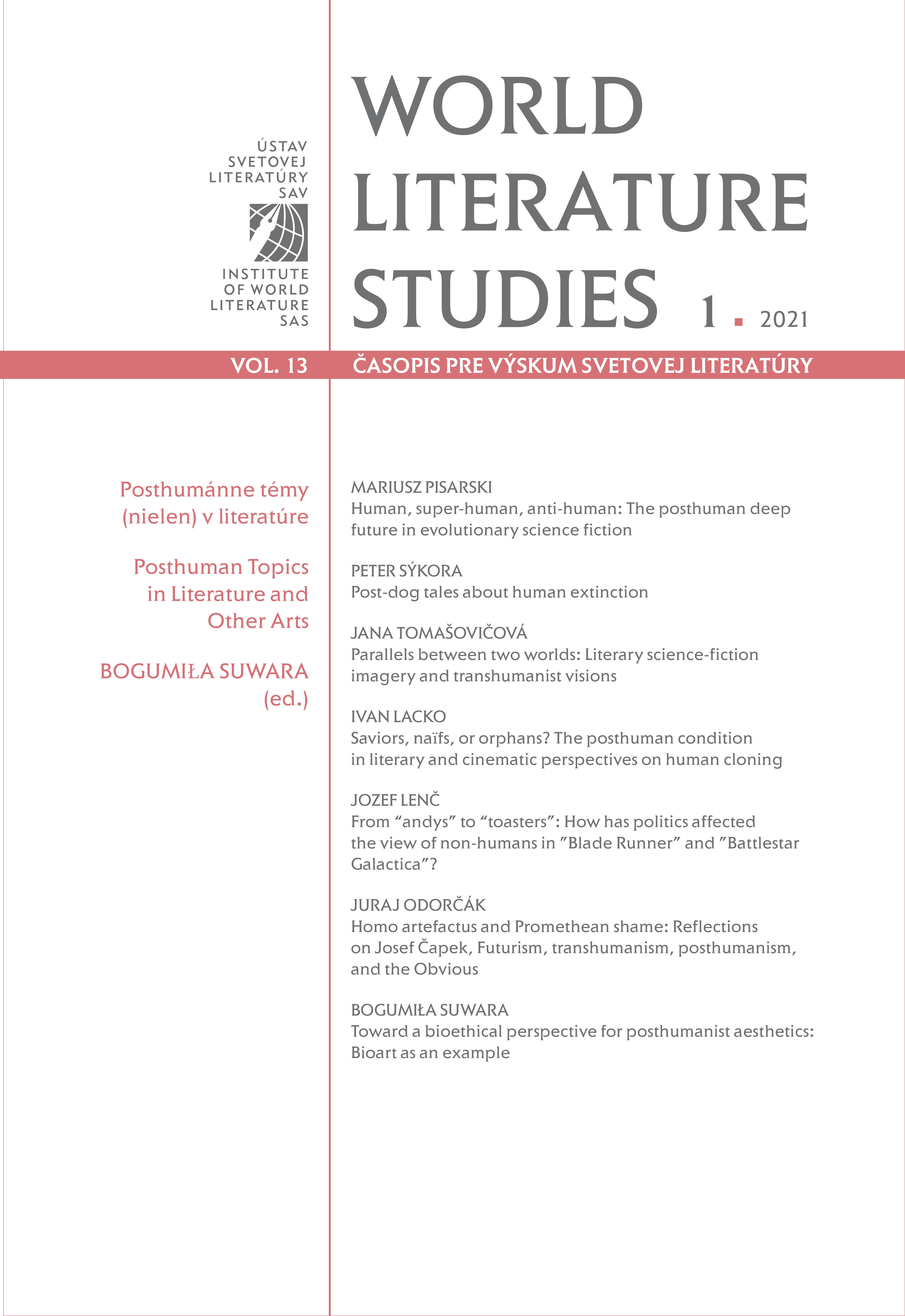From “andys” to “toasters”: How has politics affected
the view of non-humans in ”Blade Runner” and ”Battlestar Galactica”?
From “andys” to “toasters”: How has politics affected
the view of non-humans in ”Blade Runner” and ”Battlestar Galactica”?
Author(s): Jozef LenčSubject(s): Language and Literature Studies, Studies of Literature, Ethics / Practical Philosophy, Political Philosophy, Film / Cinema / Cinematography, Politics and Identity, American Literature
Published by: SAV - Slovenská akadémia vied - Ústav svetovej literatúry
Keywords: Science-fiction politics; Dystopia; Non-human; Post-humanism; Corrosion of democracy; Segregation; The world of tomorrow
Summary/Abstract: This article focuses on the change in perception of humanoid androids in science fiction from Philip K. Dick’s cult novel Do Androids Dream of Electric Sheep? (1968) and its later film adaptations, to the depictions of androids and people in the struggle for survival and immortality in the TV series Battlestar Galactica (2004–2009) and Caprica (2010). Science-fiction novels usually outline the author’s ideas about the near or distant future of the world with which they are confronted on a daily basis. They usually warn readers of a possible apocalypse or present models of an ideal future society to replace the society of today. However, science fiction is written by real people in a specific space and time who often reflect the social tensions and issues of the time they were created. The depictions of humanoid androids, their position in society, and their desire to break free from their undignified or even slavish positions are, in many cases, a reflection of real policies and the position of today’s “others” in mainstream society.
Journal: World Literature Studies
- Issue Year: 13/2021
- Issue No: 1
- Page Range: 55-67
- Page Count: 13
- Language: English

